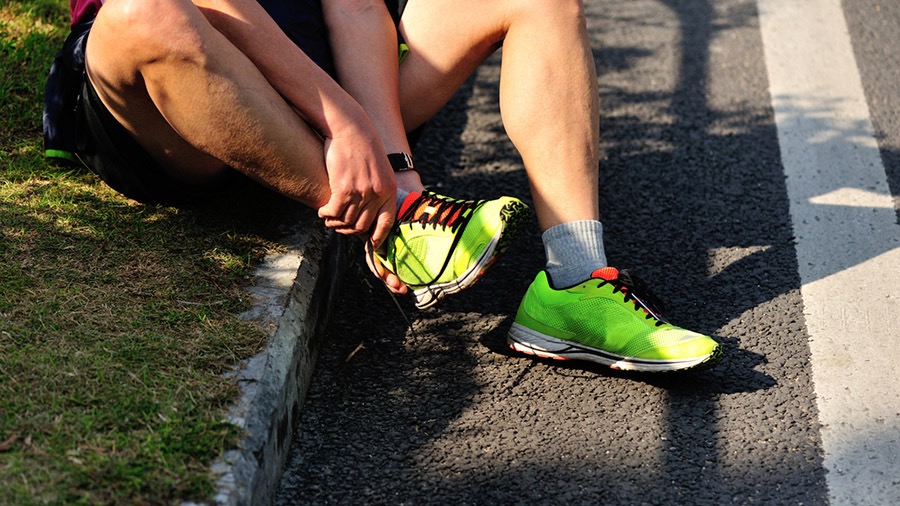In this post we discuss why you can’t treat persistent running injuries and why you have you to train them.

Last week I got the chance to listen to two podcasts that had been on my list for a while. The first from renowned running injury researcher Dr Rich Willy, the second from leading tendon rehab expert Dr Peter Malliaras, Both were on Brad Beer’s excellent physical performance show.
The overarching lesson from both experts was the importance of exercise in overcoming persistent running injuries.
Dr Malliaras described in detail his typical patient’s journey which, if you’re reading this, you may find familiar.
The typical persistent running injury journey
You’re training for a challenging event, perhaps a marathon or a triathlon. You increase either your training volume or intensity and you begin to notice pain coming from your Achilles tendon for example.
You get some physiotherapy and they give you a few exercises whilst giving the area a bit of a rub. Things feel a bit better after a while so you try a run. The pain returns almost immediately.
You go back to the physio and they suggest getting a scan. This shows some kind of pathology which, by the way, is almost inevitable and not indicative of whether you’ll be able to return to running without pain.
You’re then placed on a conveyor belt of ever more invasive treatments, starting with injections all the way through to surgery.
At each stage there’s either no or minimal progress and you’re still unable to return to running. You’ve now missed the event that you were training for and now the goal is to simply get back to running without pain.
The underlying issue
The fundamental problem according to both experts is that the initial exercise intervention was likely not appropriate. It was either too difficult or not coached properly. Or it wasn’t addressing the fundamental weaknesses that caused your problem in the first instance. In my experience it’s usually all three.
The issue you have now is that every intervention from that point on has actually made you weaker rather than stronger. And getting stronger is the only thing that will enable you to return to running.
Whilst you may be feeling understandably frustrated, don’t give up hope, all is not lost.
The answer is to go back to basics
First get a thorough assessment of exactly where you are weak. Not just at the site of injury but everywhere. We use Muscle Activation Techniques (MAT) for this.
Second, begin to train these weak areas with appropriate strength training. This will require isolating those weaknesses as much as possible to reduce your capacity to compensate around them. Something you will be very good at by now. More on this here.
The reason you got injured in the first place is because your muscular system was unable to adapt quickly enough to the forces you were placing on it. This is still the fundamental problem.
Whilst it may take time, I can assure you that in the long run (no pun intended), appropriate strength training is the only thing guaranteed to improve your muscular system’s ability to tolerate those forces.
Summary
You can’t treat a persistent running injury better, you have to train it. The key is knowing exactly where to start and doing it properly.
For a detailed post on this topic, including an exercise to get you started, go here.